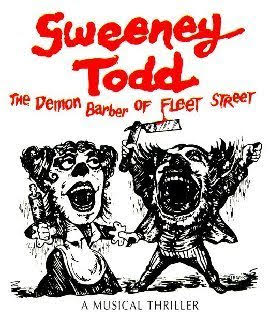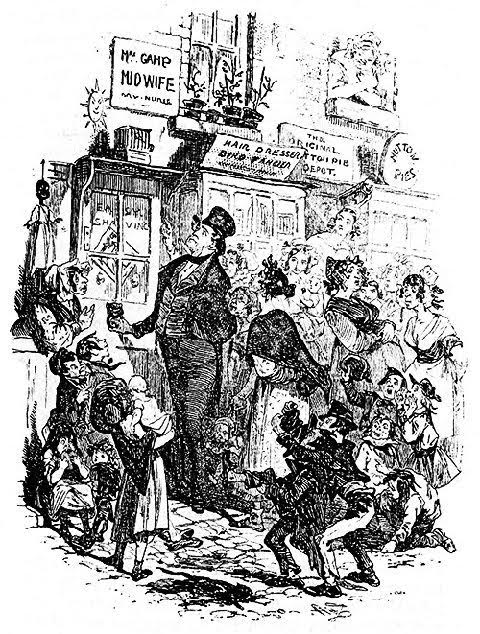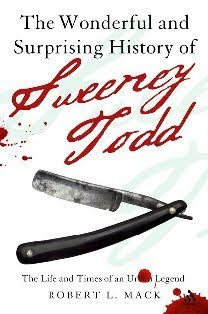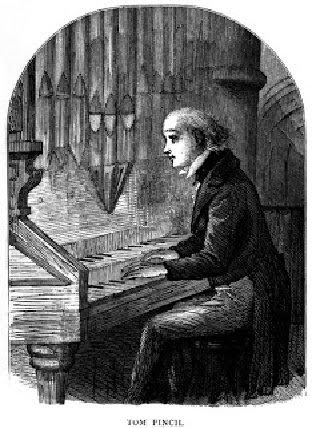Charles Dickens Possibly Influenced "Sweeney Todd"
Explore the connection between Dickens and the demon barber of Fleet Street
By Herb Moskovitz
Reprinted with kind permission of the author
Published on this site July 10, 2015
In Philadelphia there is a wonderful walk-through exhibit of A Christmas Carol in Macy's on Market Street. There are three-dimensional tableaus of scenes from the classic story and in the graveyard scene there is a tombstone for Sweeney Todd.
(It is not shown in the photo below)

Sweeney Todd, as you no doubt know, is the demon barber of Fleet Street who slits the throats of his customers and sends their bodies through a trap door to be baked into meat pies by his landlady, Mrs Lovett. The two nightmarish characters first appeared in a serialized novel in 1846 and were recently featured in a Golden Globe winning movie musical by Tim Burton, starring Johnny Depp, which is based on Stephen Sondheim's acclaimed 1979 Broadway musical thriller.

A number of years ago I designed a production of Oliver! for a local theater company. The cast members were quite amused when they found Sweeney Todd's Tonsorial Parlour and Mrs Lovett’s Meatpies painted on a backdrop of a London Street.
When one is designing scenery for a Dickensian play, one naturally looks through the illustrations of Dickens novels for ideas and I borrowed heavily from Phiz's illustration of Poll Sweedlepipe's barber shop, above which lives Sarah Gamp. In Phiz's illustration the next door neighbor is the Original Mutton Pie Depot.

I thought this a most delightful coincidence but then I bought a book about Sweeney Todd and the editor, Robert L. Mack doesn't think it a coincidence at all. He theorizes that Dickens had an influence on the legend of Sweeney Todd.

In 1843-44, when Martin Chuzzlewit was published, the legend of the murderous barber was rather nebulous. There was simply a story about a barber who killed his customers. There was no pie shop next door, though there was a separate urban legend about people being baked into pies. It took a novel, The String of Pearls, which ran as a series in The People's Periodical and Family Library from November 1846 to March 1847 to combine the two legends, solidify the story and give the characters names. The unknown author was obviously an admirer of Dickens and borrowed heavily characters and ideas from Barnaby Rudge and Chuzzlewit in his penny blood story.
Dickens was obviously aware of the meat pie legend. Tom Pinch in Martin Chuzzlewit comments "(John) will begin to be afraid I have strayed into one of those streets where the countrymen are murdered; and that I have been made meat pies of, or some such horrible thing."

Later, Tom is grateful that he has not wandered "into the dens of any of those preparers of cannibalic pastry, who are represented in many standard country legends, as doing a lively retail business in the metropolis."
Mack also points out how other characters in The String of Pearls are obviously inspired by the Varden family in Barnaby Rudge and by Walter Gay, Sol Gills and Captain Cuttle in Dombey and Son.
In Chuzzlewit Dickens notes that the barber shop is "next door but one to the celebrated mutton-pie shop."
Mack theorizes that "It is not at all unlikely that the relatively straightforward notion of combining those long-standing, narrative traditions that told the story of a barber who cut the throats of his customers, on the one hand, with the rural legends that whispered the bodies of slaughtered country-men being disposed of in the form of succulent meat pies, on the other, may in this instance have been prompted by the simple contiguity of Dickens’s description and Phiz's typically superb and economical illustration."
Maybe the designers of the Christmas Carol exhibit knew something that we didn't know.
